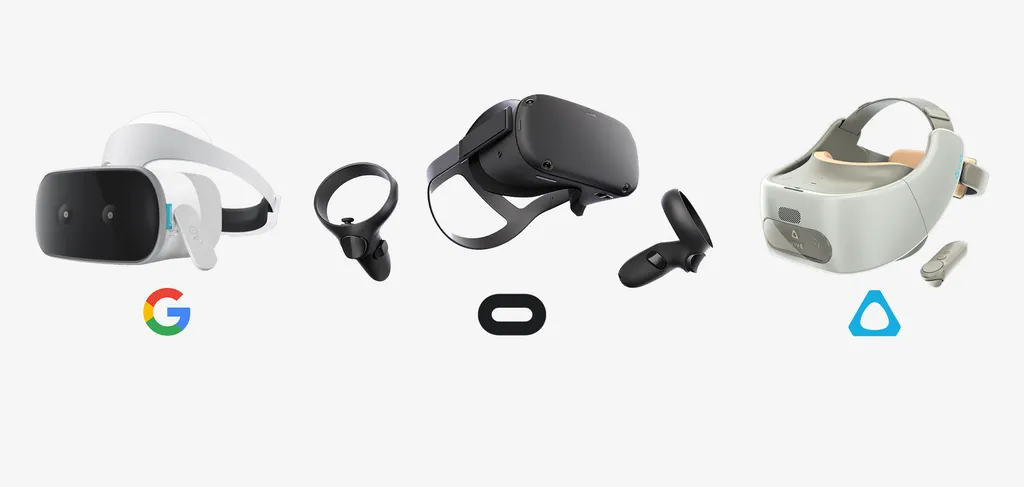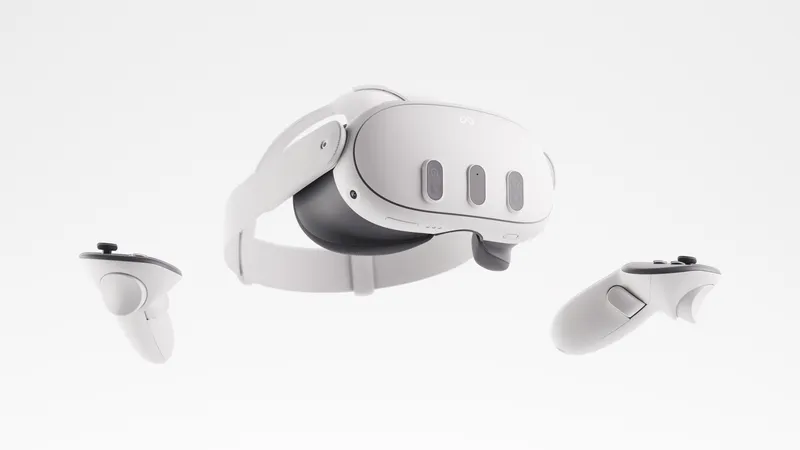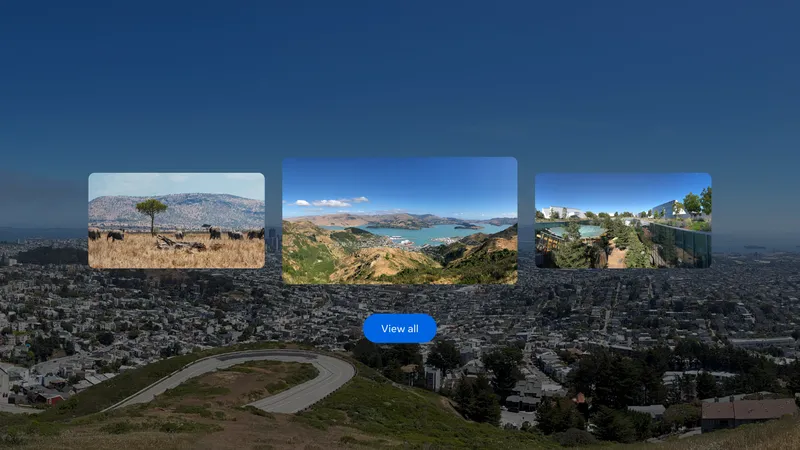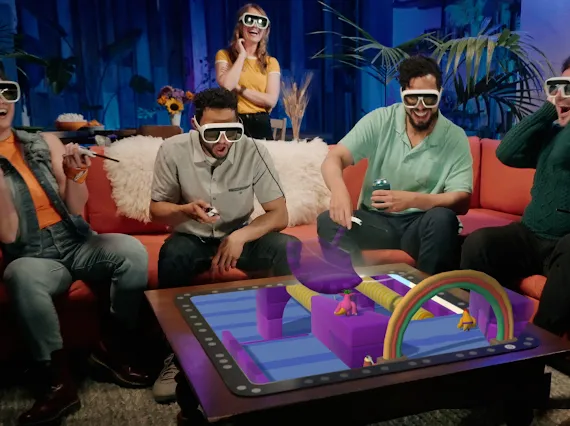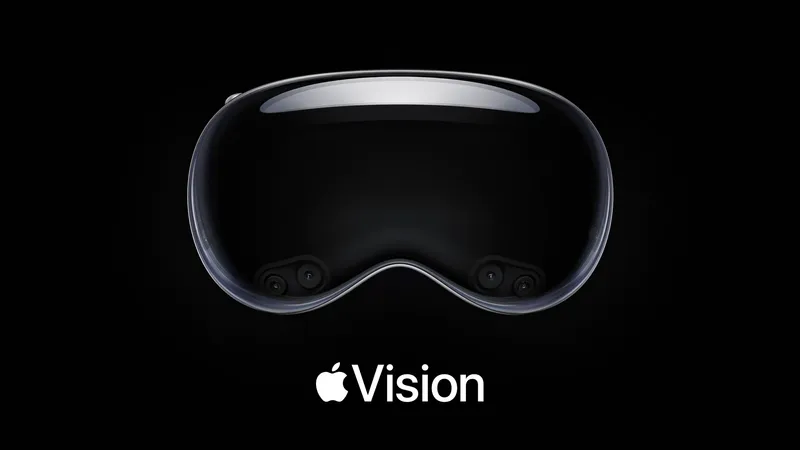UPDATE: article updated with information from Vive Focus release announcement and our hands on impression of the Vive Focus 6DoF controllers dev kit
6DoF is relatively new to standalone VR. HTC was first to deliver it with the China release of its ‘Vive Focus’ in January, and Lenovo were first to bring it to the West, with their ‘Mirage Solo’ headset released in May. While these headsets are 6DoF, their controllers are not.
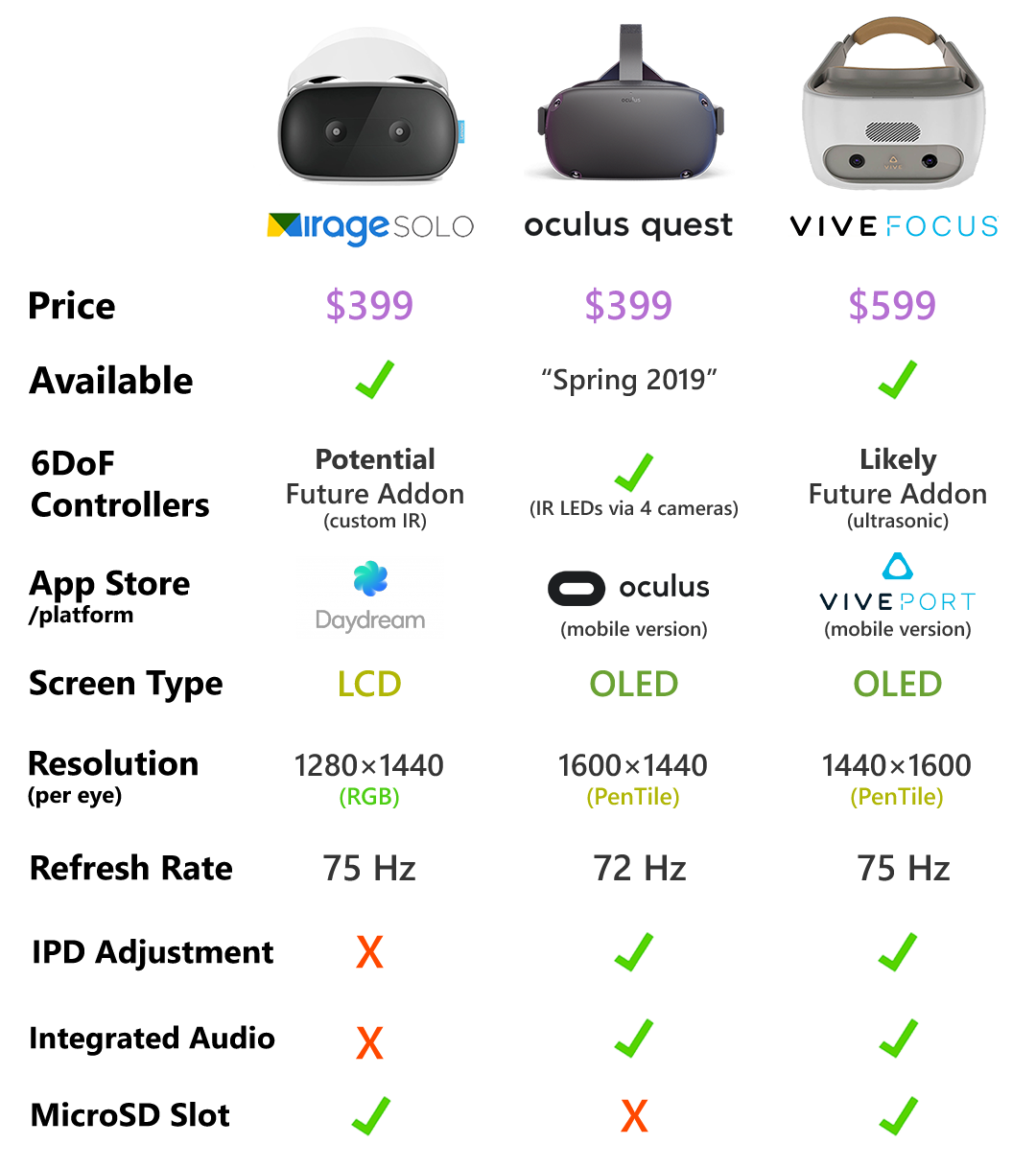
Charts Based On Information Available As Of Nov 9th 2018
If you’re confused by the terminology here, a ‘standalone’ (also called ‘all-in-one’) VR headset is one where the computing hardware, storage, and battery are all built into the headset itself. It does not require a PC or smartphone to use. Standalone headsets are important to VR’s success because relatively few people own a gaming PC, and smartphones tend to use too much power (or overheat too quickly) when used in VR mode.
‘6DoF tracking’, otherwise known as positional tracking, is when a device’s position can actually be tracked in space. When a headset isn’t 6DoF (also known as 3DoF) it can only track the rotation of your head, and thus they are only truly suitable when seated stationary. In 6DoF headsets, you can lean, duck, and walk around the room, just like in reality.
6DoF Controllers: When?
The Vive Focus and Lenovo Mirage Solo currently include a single 3DoF rotational controller which essentially acts as a laser pointer for selection, or a simple tool for basic gestures such as flicking or slashing. This severely limits the interactivity of the VR experience, and means that most of PC VR’s most popular and interesting games & apps which rely on 6DoF controllers are not yet available on standalone VR systems.
The $749 Pico Neo, launched earlier this year, was the first standalone VR system to feature 6DoF controllers, however Pico only sells this system to businesses. The $399 Shadow VR, from China, will be the first consumer standalone with 6DoF controllers.

In late September, Oculus revealed the $399 Oculus Quest, which was the first consumer standalone VR system announced to include 6DoF controllers – the same highly praised ‘Touch controllers’ that come with Rift (just with the tracking ring upwards instead of downwards, explained in the next section). Just like on Rift, they will each feature a thumbstick, 2 buttons, and separate triggers for gripping and interacting/shooting.
Google (which provides the software for the Lenovo Mirage Solo) is not sitting idle either. A week before Quest was revealed, Google unvieled “experimental” 6DoF controllers for the Mirage Solo, and opened applications for developer kits. Neither Google nor Lenovo have said when these controllers are planned to be available to consumers, if at all. In fact, back when the headset launched in May Google told CNET not to “expect” 6DoF controllers on the Mirage Solo. Whether these new experimental 6DoF controllers from Google are intended to be a future add-on for the Solo, or an included part of a successor headset (“Duo”, anyone?) is a mystery for now.
Less than 2 weeks ago, HTC also revealed a 6DoF controller developer kit for its Vive Focus headset. Like Google & Lenovo, HTC is staying hush about if or when these controllers will become a consumer product, but after the Oculus Quest reveal it seems almost certain that they eventually will some time next year.
Controller Tracking Approaches
All three standalone headsets use the same technique for positional tracking – “simultaneous location and mapping” computer vision algorithms using cameras on the front of the headset. There are two cameras each for the Focus and Mirage Solo and four cameras for the Quest.
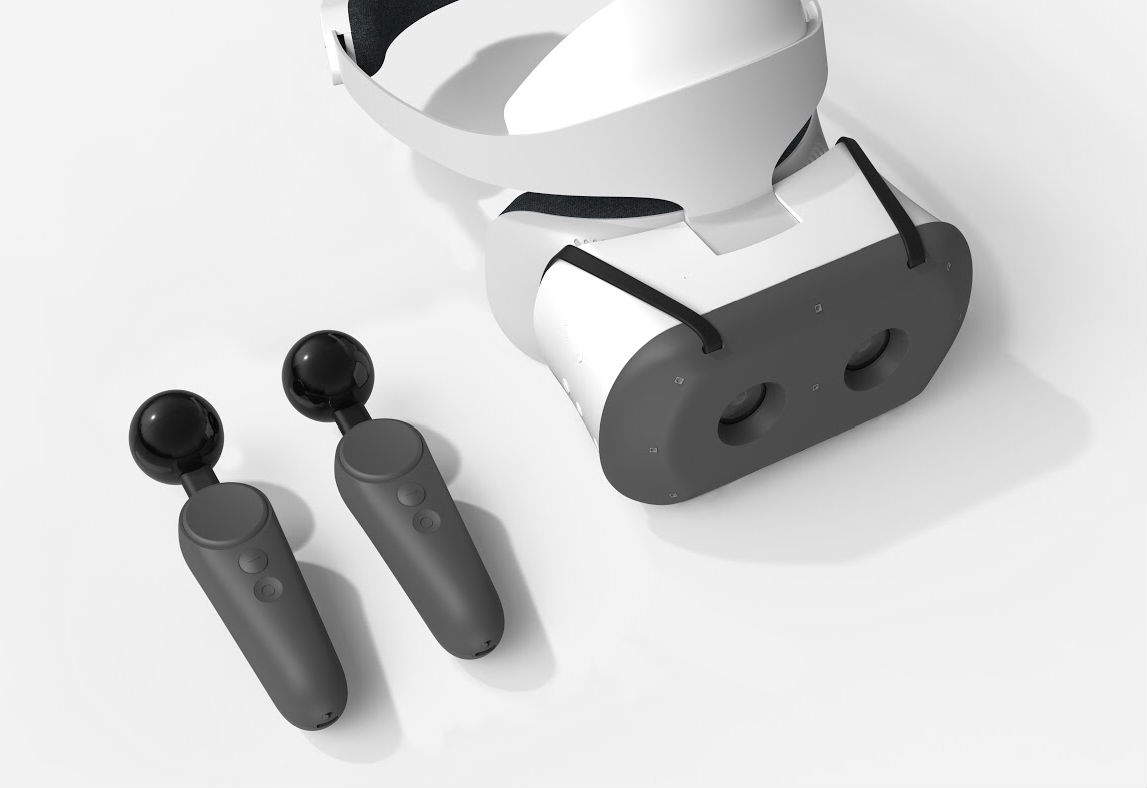
Google’s controller tracking system “uses machine learning and off-the-shelf parts” to detect controller locations. The system depicted above uses “Worldsense” tracking from the two on-board cameras (the faceplate has openings to let the cameras see the world) combined with infrared light emitters on the faceplate — similar to the kinds of emitters in a TV remote. Google is using machine learning to try to correctly guess at the locations of the controllers based on the strength and pattern of the lights. Critically, Google has not given any details on the tracking range or quality.
![]()
HTC last week revealed details for the Focus’ 6DoF controllers dev kit – it is an ultrasonic add-on system with a field of view of 180° horizontal and 140° vertical. When we tried it this week, we found it to have impressive accuracy, but noticeable delay (latency).
Just like the Touch controllers on Rift, the Oculus Quest’s controllers will have infrared LEDs under the plastic of the “tracking ring” (the ring at the top). The difference is that whereas the Rift’s controllers are tracked with stationary cameras, the Quest will use the same four cameras on the headset used for headset tracking. Because these four cameras have a wide field of view and are positioned at the corners of the front of the headset, the tracking range should be much wider than on the PC-based Windows Mixed Reality headsets.
![]()
Note the Quest’s cameras’ field of view has not been officially stated by Oculus – we are using the provided diagram (the green one above) as a reference for a rough estimation. Make sure to look at it and judge for yourself.
App Stores, Cross Buy and Vendor Lock-In
On the PC, Oculus Rift and Windows MR users can freely use either their default store or Steam, and users of any PC VR headset can get their games & apps from arbitrary websites (or even an email). The “ReVive” hack lets HTC Vive users play most Oculus Store titles too. This concept of using any source one chooses to get software has been fundamental to the PC platform for decades, however, in standalone headsets, this concept may not apply. Instead, you are restricted to using only one store – the store the manufacturer wants you to use. While manually sideloading does appear to be possible on all three standalone heasdets one way or another, none of them make this process particularly obvious.
Oculus and HTC are creating new stores for their headsets – Oculus’ being based on (but not the same as) the store they already have for Gear VR and Oculus Go, and HTC’s being a mobile version of VivePort, running their ‘ViveWave’ software platform. Lenovo, on the other hand, is using Google’s Daydream VR platform for the Mirage Solo, meaning if you already have a Daydream smartphone, your purchases will carry over.
- If you buy a Quest: your app purchases will carry over to all future versions of the ‘Quest’ line. If the developer of the app enables cross-buy, purchases would also carry over to Rift.
- If you buy a Vive Focus: your app purchases will carry over to any current or future headset running the mobile version of VivePort, including the Shadow VR.
- If you buy a Mirage Solo: your app purchases will carry over to any Android phone which supports Daydream View, as well as any future Daydream standalone headsets.
It Might Be All Down To Games
While many early adopters may read over every little specification of these headsets, the reality is that most buyers care mostly about the games they can play. Gaming is still the primary use case for consumer VR today, and Oculus has suggested it intends to market the Quest primarily as a gaming console, and expects to compete with the Nintendo Switch.
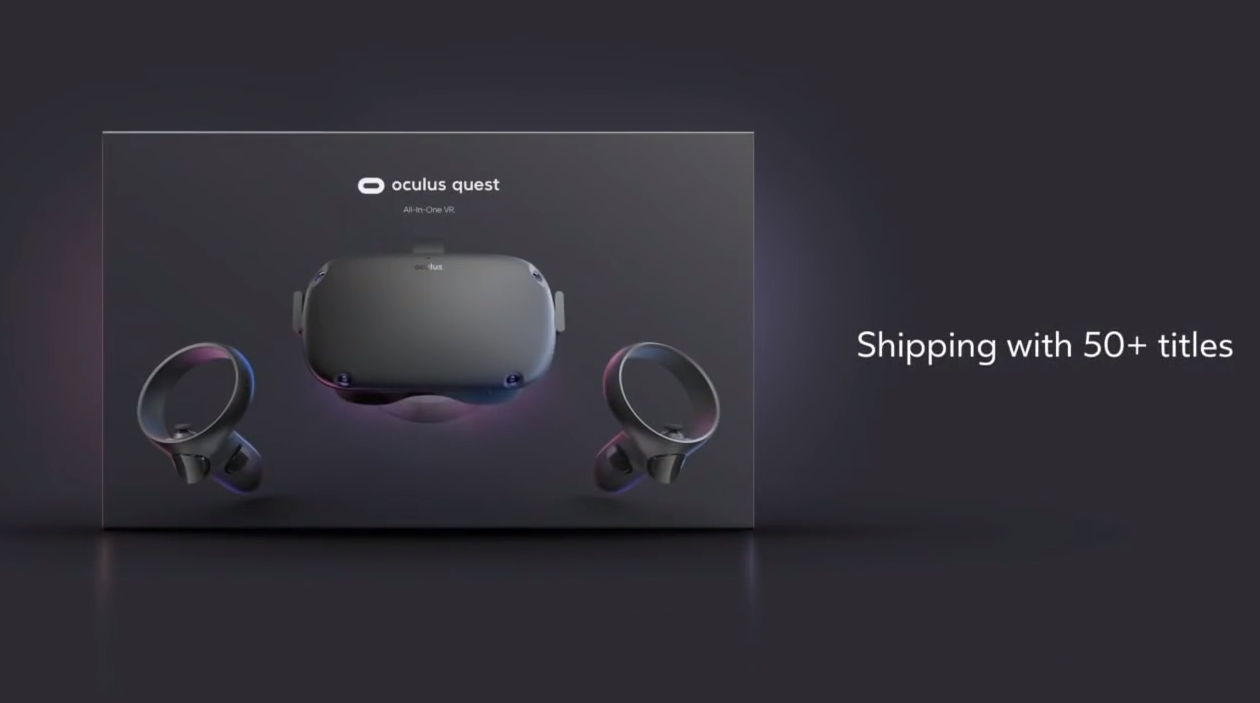
When Oculus announced Quest, one of the first things they talked about was the PC VR games that were being ported to it, including Robo Recall, The Climb, Superhot VR, Moss. Since then, the developers of Beat Saber and Rec Room hinted at their games coming to Quest. 6DoF controllers are critical to almost all of these games and none are currently available on the Vive Focus or Mirage Solo.
If 6DoF controllers do come to the Vive Focus or Mirage Solo, some of these games would likely be ported. However, with Robo Recall, The Climb, and the Darth Vader game, Oculus is continuing its strategy from Rift of funding high budget exclusive titles (Vader Immortal is only a timed exclusive though). Unlike on PC, because these headsets are not running the same operating system, hacks like ‘ReVive’ would be much more difficult or perhaps even impossible. As of yet, exclusive Oculus Go content has not been hacked to work on Daydream, though of course the incentive may not be as high as it may become with higher budget titles. If Oculus can deliver a strong lineup of exclusive content, this may become Quest’s main competitive advantage in itself, and a situation much like exists on gaming consoles today may emerge.
The app ‘VRidge’ can be used to stream PC VR games from a gaming PC to standalone headsets using your home WiFi (your mileage may vary), however HTC is the only company to officially support this. For the Quest and Mirage Solo, the app would have to be sideloaded.
Display Systems
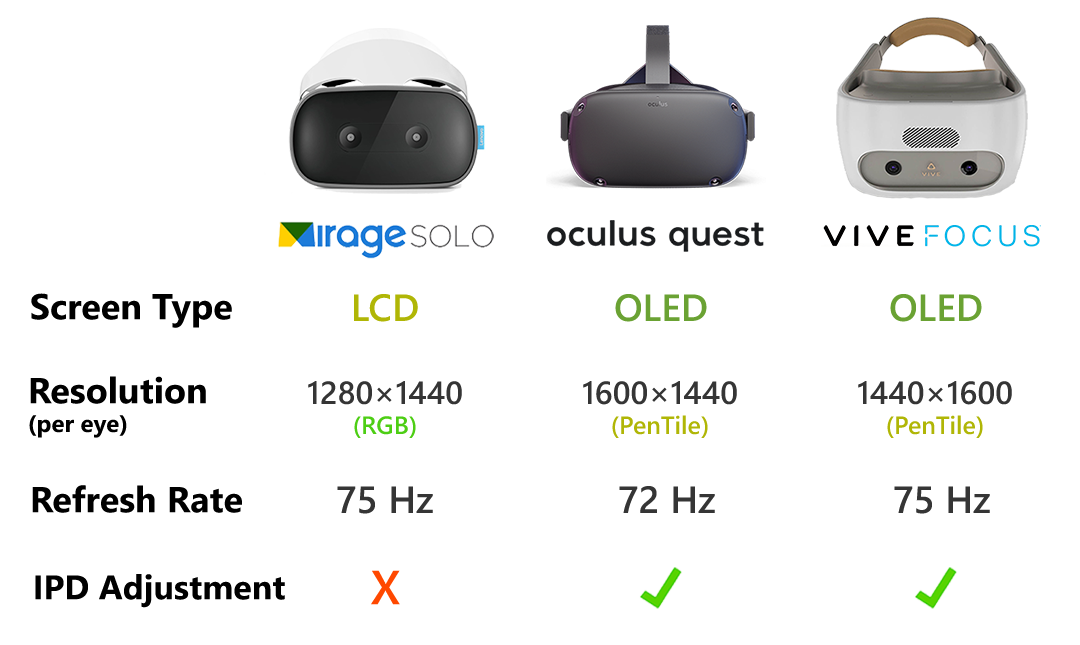
Both the Oculus Quest and HTC Vive Focus use dual 1440×1600 OLED displays – likely the same Samsung display also found in the original Samsung Odyssey and HTC Vive Pro.
Oculus uses the same “next generation” lenses developed for the Oculus Go (which we noted in our review were extremely clear with reduced god rays compared to Rift), whereas HTC appears to use the same lenses as the 2016 PC-based Vive and 2018’s Vive Pro. This suggests Quest will have a smaller field of view than Vive Focus, but a larger “sweet spot” (area of the lens which is clear relative to the center) and higher angular resolution (pixels per degree). Both Quest and Vive Focus feature mechanical lens separation adjustment (just like the Rift and Vive on PC), allowing the user to dial in the lenses to the correct distance between their eyes.
The Mirage Solo uses a single 2560×1440 LCD display. LCD displays generally offer inferior contrast and black levels, but because they have three true subpixels per pixel, whereas most OLED displays use a “PenTile” subpixel arrangement where there is only a ratio of 2 subpixels to each pixel, LCD’s tend to have a relatively sharp image and with less apparent “screen door effect”. Because it is a single display, however, the Mirage Solo does not have adjustable lenses.
The Vive Focus and Mirage Solo both run at 75 Hz, whereas the Quest will run at a slightly lower 72 Hz. The 75 Hz headsets will thus have slightly smoother motion, but be slightly harder to render to. Interestingly, because 72 is a multiple of 24, Quest will be able to display films (almost all of which are 24FPS) on a virtual screen without any hitching.
Conclusion: Wait
It’s hard to understate how important these headsets will be for the future of VR, once they get 6DoF controllers. The PC is where the most graphically intense experiences will live, but most people simply don’t own one. The Oculus Quest, HTC Vive Focus, and Lenovo Mirage Solo will allow regular consumers to jump into 6DoF VR easier and cheaper than ever. No PC, no wires, and fully portable.
The true magic of 6DoF VR, however, is having your hands there with you – the interactivity this opens up fundamentally changes the experience. But right now, we simply don’t know when 6DoF controllers will be available for the Vive Focus or Mirage Solo. The release of the Oculus Quest in Spring will almost certainly force HTC and Google to reveal their hands, at which point, enough information should be available to make an informed choice.
So what do you think about 6DoF standalone VR? Do you have a Mirage Solo? Are you getting a Vive Focus or Shadow VR? Or are you waiting for Oculus Quest? Let us know in the comments below – this is an exciting new category and we’d love to hear your thoughts.

